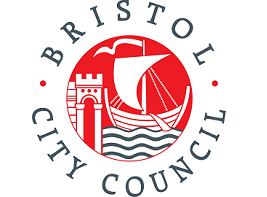Yet, as is common with all major towns and cities, Bristol is running a constant battle to control criminal damage on its streets.
How bad is criminal damage in Bristol?
Criminal damage is classified as someone destroying or damaging the property of others, with no lawful excuse, with intent or being reckless to whether that property would be damaged or destroyed. It is popularly known as “vandalism”.
This clearly covers a wide range of issues in Bristol – such as smashing windows and wrecking park equipment. However, as Bristol relies so much on its visitor economy and its environmental splendour, it has put graffiti high on its agenda for prevention and prosecution.
Bristol’s police and city council joined forces to launch a crackdown on graffiti and nuisance tagging in 2015, a response to residents’ complaints in the areas most blighted by this form of criminal damage.
Daniella Radice, who at the time was assistant mayor for neighbourhoods, was quoted as saying: “Graffiti is an issue that a lot of people around the city are concerned about.
“We are taking a joint problem solving approach, working closely with the police, and this is clearly working well as we already have someone set to go to court. We are taking a joint problem-solving approach, working closely with the police.
“We are currently working on a new policy, which aims to make it clear exactly what constitutes graffiti. As a cultural capital, we support street art where the owner of the building has given permission, but we are keen to see the end to tagging across the city.”
The size and scope of the problem in Bristol
Figures released by the Home Office in 2016 indicated that there had been an increase in reported incidents of criminal damage and arson incidents in Bristol.
In March 2015, there were 387 incidents. By in March 2016 this had risen to 425, according to Avon and Somerset Police.
Not surprisingly, Bristol’s city centre is one local area that suffers the most incidents of criminal damage, but other areas too are considered crime “hot spots”, including The Groves in Hartcliffe, Tarnock Drive in Hengrove, The Bearpit subway, and Long Cross in Lawrence Weston.
Bristol’s racially motivated criminal damage
In the past two years that has been an increase in reported racially motivated criminal damage (such as graffiti and damage at mosques) in Bristol. This follows the pattern of all hate crimes in the city.
In the first six months of 2016 alone, there were 569 recorded incidents of hate crimes (classified as motivated by race or religion) throughout the Bristol City area, according to Avon and Somerset Police. Of those, 54 were criminal damage, therefore a significant part of the overall figures for criminal damage in the area.
Some see this as an indication that local people are more likely to report these incidents these days – they are reassured that action will be taken. Therefore, the increased figures don’t necessarily show a rising level of acts of vandalism inspired by racial and religious prejudice.
Advice and support for Bristol residents and business

One of the ways Bristol City Council and the area’s police are seeking to stamp out criminal damage in Bristol’s streets is to raise levels of vigilance.
CCTV is increasingly being used in Bristol City Centre and public appeals are being made to “name and shame” the culprits.
There is also work underway to counterbalance the misplaced view that this is a “victimless crime” and show Bristol’s young people that graffiti, and willful destruction of other people’s property, does affect people and can have a negative effect on their own environment.
Restorative Bristol is a city-wide campaign, uniting individuals, agencies and services to use restorative approaches for dealing with “conflict”.
Marilyn Harrison, Community Rehabilitation Company (CRC) explained that Restorative Bristol seeks to: “promote and support all sectors, communities and the public to embrace a restorative culture where our response to dealing with initial conflict, wrong doing or harm, puts the wishes and needs of the person harmed at the heart of any restorative approach, community resolution or restorative justice activity”.